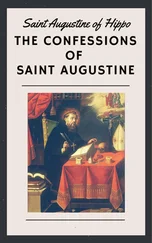Frances Forbes - The Life of Saint Columba, Apostle of Scotland
Здесь есть возможность читать онлайн «Frances Forbes - The Life of Saint Columba, Apostle of Scotland» — ознакомительный отрывок электронной книги совершенно бесплатно, а после прочтения отрывка купить полную версию. В некоторых случаях можно слушать аудио, скачать через торрент в формате fb2 и присутствует краткое содержание. Жанр: foreign_antique, foreign_prose, на английском языке. Описание произведения, (предисловие) а так же отзывы посетителей доступны на портале библиотеки ЛибКат.
- Название:The Life of Saint Columba, Apostle of Scotland
- Автор:
- Жанр:
- Год:неизвестен
- ISBN:нет данных
- Рейтинг книги:4 / 5. Голосов: 1
-
Избранное:Добавить в избранное
- Отзывы:
-
Ваша оценка:
- 80
- 1
- 2
- 3
- 4
- 5
The Life of Saint Columba, Apostle of Scotland: краткое содержание, описание и аннотация
Предлагаем к чтению аннотацию, описание, краткое содержание или предисловие (зависит от того, что написал сам автор книги «The Life of Saint Columba, Apostle of Scotland»). Если вы не нашли необходимую информацию о книге — напишите в комментариях, мы постараемся отыскать её.
The Life of Saint Columba, Apostle of Scotland — читать онлайн ознакомительный отрывок
Ниже представлен текст книги, разбитый по страницам. Система сохранения места последней прочитанной страницы, позволяет с удобством читать онлайн бесплатно книгу «The Life of Saint Columba, Apostle of Scotland», без необходимости каждый раз заново искать на чём Вы остановились. Поставьте закладку, и сможете в любой момент перейти на страницу, на которой закончили чтение.
Интервал:
Закладка:
F. A. Forbes
The Life of Saint Columba, Apostle of Scotland
THOUGH more than 1300 years have gone by since the death of St. Columba, there are few saints whose memory is so living and so strong. This is partly due to his vivid and attractive personality, but in a great measure also to the fact that we have his Biography or Life written at great length by Adamnan, ninth abbot of Iona, who was born only twenty-seven years after Columba's death. Adamnan, who was very young when he entered the community at Iona, could have gathered the materials for his book from the lips of those who had personally known the great Apostle of Scotland, and who had been eye-witnesses of the events recorded. We know that these friends were many, and drawn from all classes, for Columbcille, above all the men of his time, had the gift of being loved, and many instances are related of the passionate devotion of the monks of Iona to their great abbot, no less than that of the multitudes with whom in his long and busy life he had come in contact. Adamnan is considered to be a sober and trustworthy author, and has not exaggerated, as many of the later writers undoubtedly have, the miraculous element in the life of the Saint.
Carlyle, who cannot be considered as an advocate of the supernatural, remarks of the Life of St. Columba: "You can see that the man who wrote it could tell no lie. What he meant you cannot always find out; but it is clear that he told things as they appeared to him."
There are many interesting relics of Columba still in existence. An ancient stone chalice which he is said to have used at Mass is still preserved in Ireland, together with the flagstone which formed the flooring of Eithne's room the night that he was born. A pathetic custom exists amongst the poor Irish emigrants of sleeping the night before they leave their country on this stone, in the hope that he who made himself an exile from his country for the love of God will by his prayers make the burden of their sorrow easier to bear. The stone which he used for so many years as a pillow is still to be seen amongst the ruins of the cathedral of Iona, which was erected in the twelfth century near the site of the old abbey church of Columba's building, while the ruins of St. Oran's chapel near at hand enclose the very spot where the Saint breathed his last upon the altar steps.
But perhaps the most interesting of all the Columban relics are the three manuscripts which are said to have been written by the Saint's own hand. That Columbcille was an indefatigable scribe we know from the witness of many of his contemporaries, and one of the greatest of modern authorities (Mr. Westwood) sees no reason for setting aside the tradition that the "Book of Kells" and the "Book of Durrow" are both mainly, if not altogether, Columba's work. The "Book of Durrow," indeed, bears an inscription stating that it was written by "Columba the scribe in the space of twelve days," while the "Book of Kells" has always borne the title of the "Great Gospel of Columbcille." To the objection that a busy man like Columba would not have had leisure to execute the exquisitely minute decorations which are the astonishment of all admirers of Celtic art, it can be urged that many old manuscripts which still exist in an unfinished condition bear witness to the fact that it was customary for the initial letters and ornamental parts of the manuscript to be sketched roughly in, and finished by another hand. This is especially to be noted in the "Book of Kells," the decorative work of which is certainly of a later date. Both the "Book of Durrow" and the "Book of Kells" are to be seen in the Library of Trinity College, Dublin.
The third manuscript, the famous Psalter which gave Columbcille to Scotland and which is preserved in the Royal Irish Academy, fell, after the battle of Cuil Dreimhne, into the hands of the O'Donnells, Columba's own clan, who treasured it as their most precious possession. It was called the "Cathach" or "Battler," and if borne into battle by "one of pure heart and of clean hands" was believed to ensure them the victory over their enemies. It is the least ornamental of the three, and bears traces of the haste with which it was executed. The existence of these pages, written with laborious care by the hand which has long since mouldered into dust, makes a living link across the centuries with Columbcille the Beloved, the great Apostle of Scotland.
CHAPTER I
CHILD OF THE MOUNTAIN AND THE LAKE
FOURTEEN hundred years ago, in the sweet days of autumn, when the woods of Gartan are clothed in crimson and gold, and the still waters of Lough Veagh reflect the deep blue of the skies above, Eithne, the wife of Fedhlimidh, Prince of Tir-Connell, had a strange dream. It seemed to her that an angel of God stood beside her, bearing in his hands a veil scattered all over with the Bowers of Paradise, and that, spreading it out, he bade her admire its beauty. Eithne was a daughter of kings, but never before had she seen so marvellously fair a web; she stretched out her hands to grasp it, but even as she touched it, it rose and fluttered lightly into the air. Over hill, mountain, and lough floated its shadowy loveliness, till it rested at last on the moors and mountains of a land that lay far away in the moaning seas. Then Eithne wept for the loss of the beautiful veil, but the angel comforted her.
"It is but a symbol," he said, "of the son that shall be born to thee in the days to come. He shall be a prince and a prophet; the world shall be perfumed by his holiness; and he shall bear the flower of the faith among the heathen far over land and sea."
When morning came Eithne told her husband of the dream, and the two took counsel together. That his son should be a great prince in no way surprised Fedhlimidh. Was not he himself a grandson of the great king Niall of the Nine Hostages, so called because he had subdued nine Kings of Ireland to his will and made them his vassals, and was not the reigning king of all Ireland his near kinsman? No strange thing would it have been in those turbulent days, when the lives of kings were short and uncertain, were the son of Fedhlimidh himself to be set on the throne as High King of Ireland.
But Eithne's dream seemed to point more to a heavenly supremacy than an earthly; was it an indication of God's will that they should dedicate their child to Him? They thought it was, and a few months later, when heaven sent them a fair and beautiful little son, they earnestly prayed to the Giver of all good gifts that He would take the child, if it seemed well to Him, for His service.
At Teampall-Douglas, a few miles from Gartan, there lived a holy old priest called Cruithnechan; to him they took the babe that it might receive at his hands the holy rites of Baptism. He was given the name of Columba, a not uncommon name in Ireland at the time, and while yet a little child was sent back to the saintly Cruithnechan that the old man might train him in the ways of wisdom and holiness.
In this Columba's parents but followed the custom of the time, for it was usual for the sons of chiefs to be brought up from their earliest youth by some great bard, soldier, or priest, according to their destination in life; and it was the duty of these foster parents to train their charges in all that had to do with their future profession.
The little Columba was an apt pupil. It was his delight to accompany his master to the Church, there to listen to the chanting of the Divine Office; and so keen of ear and quick of memory was the boy that he had learnt some of the psalms by heart before he could spell them out in the Psalter – the lesson-book of every young reader of his time. Cruithnechan himself was unaware of this until one day when he took the child with him on a visit to a brother priest near Derry. The two clerics went together to the Church to chant the Divine Office, and Columba, as was his wont, knelt to pray before the altar.
Читать дальшеИнтервал:
Закладка:
Похожие книги на «The Life of Saint Columba, Apostle of Scotland»
Представляем Вашему вниманию похожие книги на «The Life of Saint Columba, Apostle of Scotland» списком для выбора. Мы отобрали схожую по названию и смыслу литературу в надежде предоставить читателям больше вариантов отыскать новые, интересные, ещё непрочитанные произведения.
Обсуждение, отзывы о книге «The Life of Saint Columba, Apostle of Scotland» и просто собственные мнения читателей. Оставьте ваши комментарии, напишите, что Вы думаете о произведении, его смысле или главных героях. Укажите что конкретно понравилось, а что нет, и почему Вы так считаете.










